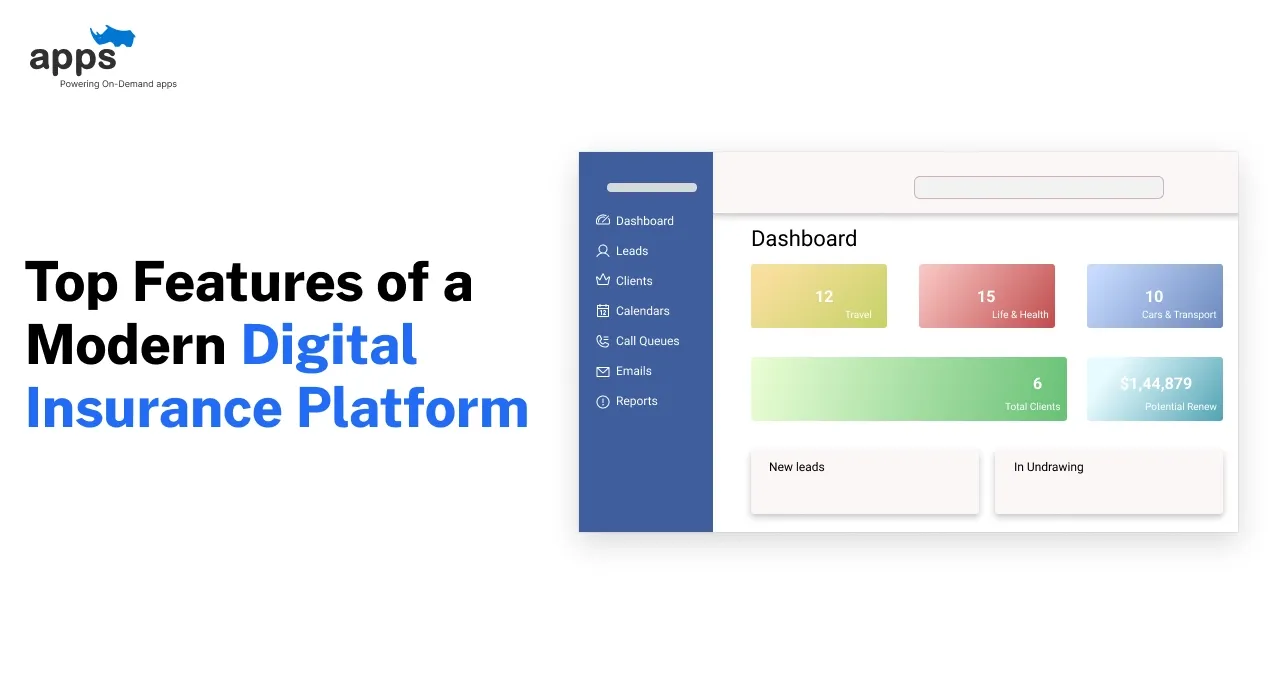- Basics of Manufacturing Process Management
- Core Elements of Manufacturing Process Management
- Stages of Manufacturing Process Management
- Tools and Technologies Used in Manufacturing Process Management
- Traditional vs Smart Manufacturing: How MPM Changes the Game
- Benefits of Manufacturing Process Management
- Challenges in Manufacturing Process Management
- Real-Life Example: MPM in Action
- How to Get Started with Manufacturing Process Management
- Future of Manufacturing Process Management
- Final Thoughts on Manufacturing Process Management
- Frequently Asked Questions (FAQs)
Table of Contents
What is Manufacturing Process Management?

Manufacturing process management (MPM) is key to keeping production efficient and agile in today's manufacturing world. Industries from healthcare devices to e-commerce logistics rely on streamlined production workflows.
Companies embracing industrial automation and smart manufacturing need systems that tie together design, machines, and people.
A robust MPM system acts as a bridge between engineering plans and the factory floor. It ensures that designs, bills of materials, schedules, and work instructions stay coordinated across teams. Strong manufacturing process management can reduce delays and waste, giving businesses a competitive edge.
Manufacturing process management is more than software – it’s a strategy that aligns your engineering and production teams.
By unifying people, processes, and data, MPM makes it easier for any size company, from startups to enterprises, to meet production goals in the digital age.
Basics of Manufacturing Process Management
Manufacturing process management focuses on administering all the resources, people, and procedures needed to make a product.
Essentially, MPM connects product design with production. It sits between engineering (design) and operations (factory), managing the production workflow end-to-end.
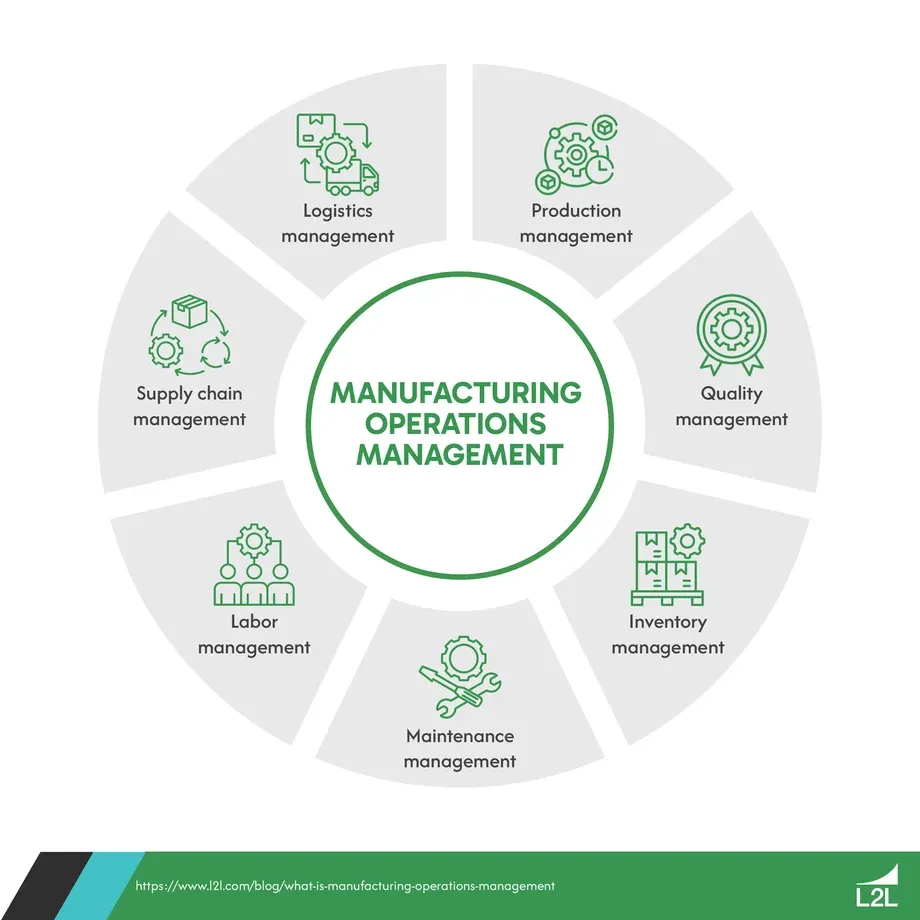
For example, PTC’s Windchill MPMLink collects data like engineering bills-of-material (eBOMs), tools, and workstations to link design with manufacturing. This lets engineers update an eBOM and automatically derive the corresponding manufacturing BOM (mBOM) so that design changes flow directly into the production plan.
Unlike a manufacturing execution system (MES), which handles real-time execution on the shop floor, MPM emphasizes planning, process design, and data coordination.
An MES tracks jobs and machine status, whereas MPM manages the blueprint of how those jobs should run. With MPM, changes in product design automatically update work instructions and schedules, keeping engineering and production teams in sync.
This ensures that factories are always using the latest design data. Overall, manufacturing process management helps companies adapt quickly to design changes and align factory operations, reducing costly miscommunication and rework.
Core Elements of Manufacturing Process Management
A robust manufacturing process management framework involves many components that work together to ensure smooth production. Key elements of an MPM system typically include the following, as given below.
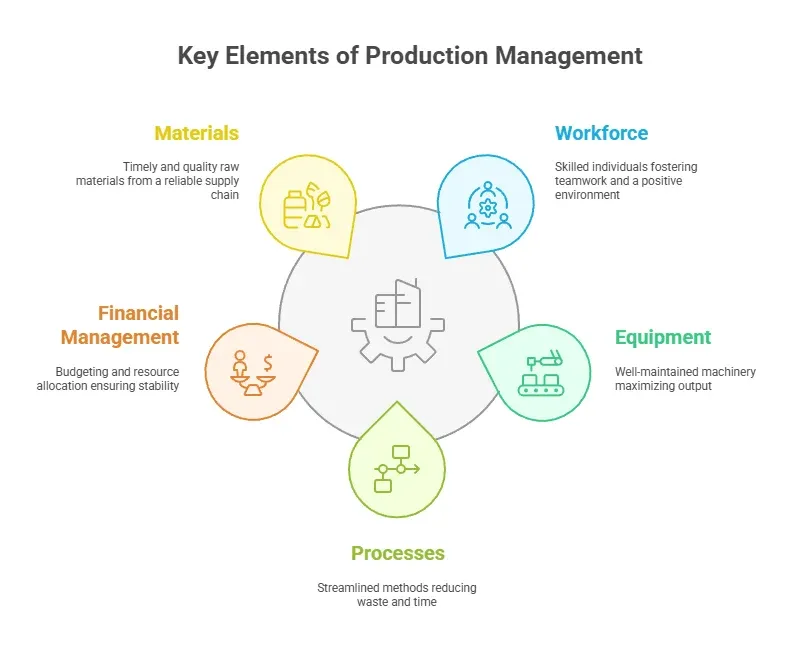
- Production Planning & Scheduling: Define the production workflow, sequence jobs on the line, and allocate equipment and shifts. MPM software often integrates with MES tools to ensure schedules are executable.
- Bill of Materials (BOM) Management: Manage engineering BOMs (eBOM) and manufacturing BOMs (mBOM) in one system. MPM tools keep these BOMs in sync across multiple sites. When engineers update a design, the MPM platform automatically updates.
- Work Instructions & Documentation: Maintain clear assembly instructions, routing steps, and process documentation. An MPM system provides a single source of truth for work orders, so every operator follows the same approved procedures.
- Resource & Inventory Control: Track materials, tools, and equipment needed for production. MPM often ties into inventory management to ensure parts are on hand.
- Quality & Compliance: Embed quality checks and compliance steps into the process. MPM can trigger inspections at key steps and record results by recording audit trails and validation history.
- Data Analytics & Reporting: Collect production data (throughput, yield, downtime) for analysis. MPM platforms offer dashboards and reports so managers can spot trends and optimize processes.
- System Integration: Link CAD/PLM systems (design) with ERP, MES, and IoT devices (shop floor). Integration ensures data flows seamlessly.
Altogether, these elements enable manufacturing process management to optimize production at every step.
MPM creates a unified digital thread from design through assembly by combining planning, BOM management, documentation, resources, quality, analytics, and integration.
Stages of Manufacturing Process Management
Think of manufacturing process management as a cycle of stages from design through continuous improvement. The stages often include the following.
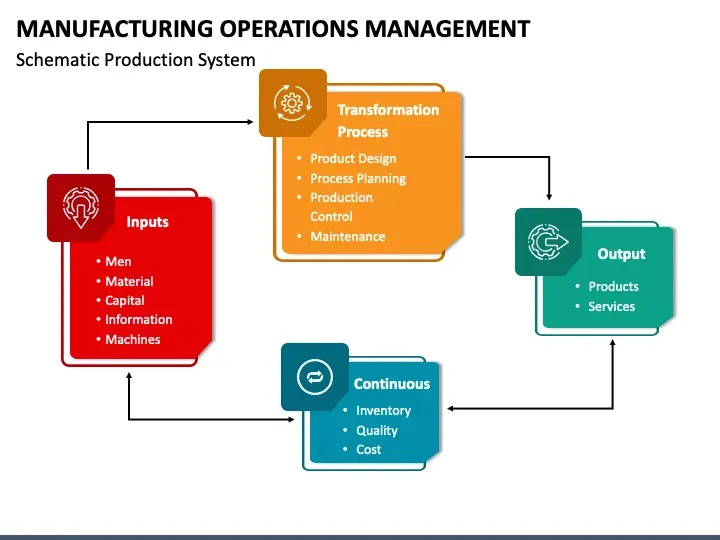
Step 1: Design & Process Planning
Engineers create or update a product design and draft the initial manufacturing process plan. This involves defining assembly steps, machines, and required tools.
Step 2: Production Preparation
The plan is detailed further. A finalized manufacturing bill of materials is prepared, and resources (materials, labor, equipment) are allocated. Production schedules are developed to align with demand.
Step 3: Execution & Monitoring
The production plan goes live on the shop floor. Machines and operators execute the planned workflow through integration with MES and automation.
Real-time data (via sensors or scanners) is collected to monitor progress and flag delays.
Step 4: Quality Control & Data Collection
Inspections are performed as parts move down the line, and quality data (e.g., defect rates) are logged. The MPM system captures all production data, like throughput and machine utilization.
Step 4: Feedback & Improvement
Engineers and managers review the collected data. The MPM system is updated if a bottleneck or defect trend is identified.
Because MPM provides a closed loop, these improvements in design or process automatically flow into the next production cycle.
For example, in each phase of the manufacturing process, management tools ensure that information flows seamlessly: a change in design is visible during planning, recorded during execution, and analyzed in feedback.
Over time, repeating these stages leads to better performance and agility in manufacturing.
Tools and Technologies Used in Manufacturing Process Management
Modern manufacturing process management relies on several categories of technology.
Key tools include Manufacturing Execution Systems (MES), Product Lifecycle Management (PLM) platforms, automation devices, analytics software, and cloud/mobile solutions.
Below are some of the significant components.
A) Manufacturing Execution Systems (MES)
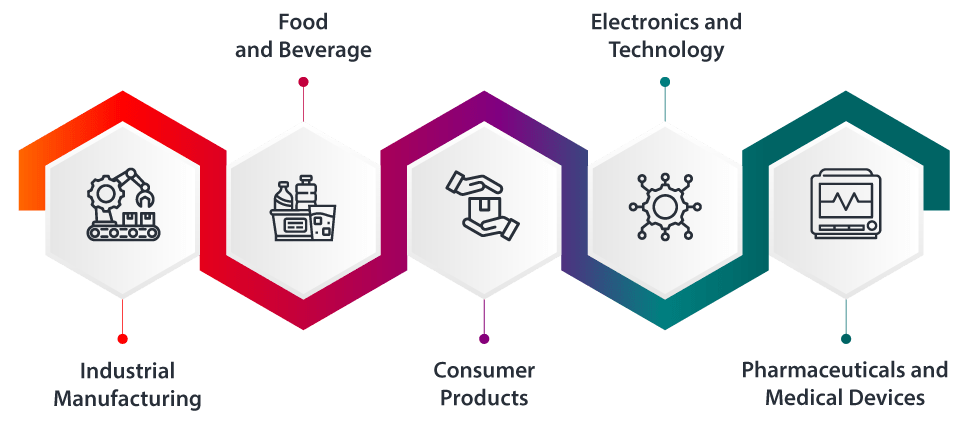
Software that executes production plans on the shop floor.
- An MES schedules and tracks work orders, machine status, and operator tasks in real time.
- It often integrates with MPM data so that the plan set in the MPM system is carried out on the factory floor.
MES provides the link between the digital strategy and physical execution.
B) PLM and MPM Software
Product Lifecycle Management (PLM) suites often include dedicated MPM modules.
- For example, a PLM platform with built-in manufacturing process management capabilities.
- Companies use an MPM platform to create a single source of truth for manufacturing data, ensuring everyone sees the latest revisions.
These tools let you manage the manufacturing bill of materials, process plans, and work instructions in one system.
C) Industrial Automation and IoT Devices
Robots, PLCs, smart sensors, and automated machines perform production tasks and feed data into the MPM.
- Modern factories use industrial automation heavily as more devices connect to the network.
- MPM systems can automatically adjust schedules or maintenance tasks based on live data, advancing smart manufacturing goals.
The global industrial automation market is projected to reach about $265 billion by 2025.
D) Data Analytics and AI
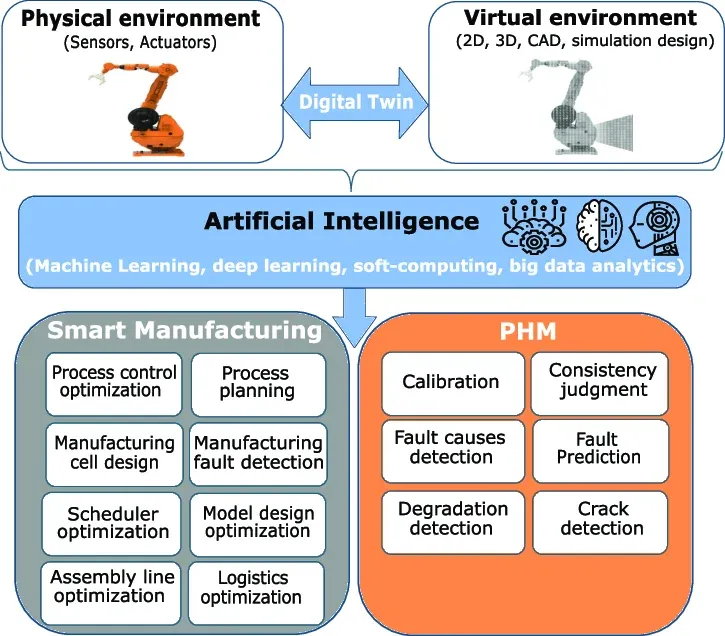
Advanced analytics engines and AI/ML models process production data collected by the MPM.
- They might predict machine failures, optimize scheduling, or detect quality patterns.
- For example, machine learning can spot that a particular shift has lower output, prompting a process change.
Over time, AI helps tighten the production process and prevent downtime.
E) Cloud and Mobile Platforms
Many MPM solutions now run in the cloud, enabling access from anywhere.
- Factory managers can review dashboards on tablets or phones, and workers can view digital work instructions on handheld devices.
- These tools keep the production workflow connected at every level.
Cloud platforms simplify integration and updates.
Traditional vs Smart Manufacturing: How MPM Changes the Game
Understanding the impact of manufacturing process management starts with comparing traditional production methods to modern, MPM-driven approaches.
The table below highlights how MPM transforms critical aspects of manufacturing, from planning to flexibility.
Factor | Traditional Manufacturing | Smart Manufacturing (MPM-driven) |
| Planning | Manual scheduling is prone to delays | Automated scheduling with real-time data |
| Data Visibility | Siloed information, delayed reporting | Integrated systems with real-time dashboards |
| Quality Control | Reactive inspections | Continuous monitoring and predictive alerts |
| Resource Use | Often under- or over-utilized | Optimized via analytics and IoT feedback |
| Flexibility | Slow to adapt to changes | Agile re-planning, digital twins for quick updates |
The table above contrasts traditional methods with MPM-enabled smart manufacturing. With MPM tools and connected technology, processes become more flexible, transparent, and automated.
Benefits of Manufacturing Process Management
Implementing a strong manufacturing process management strategy brings many advantages.
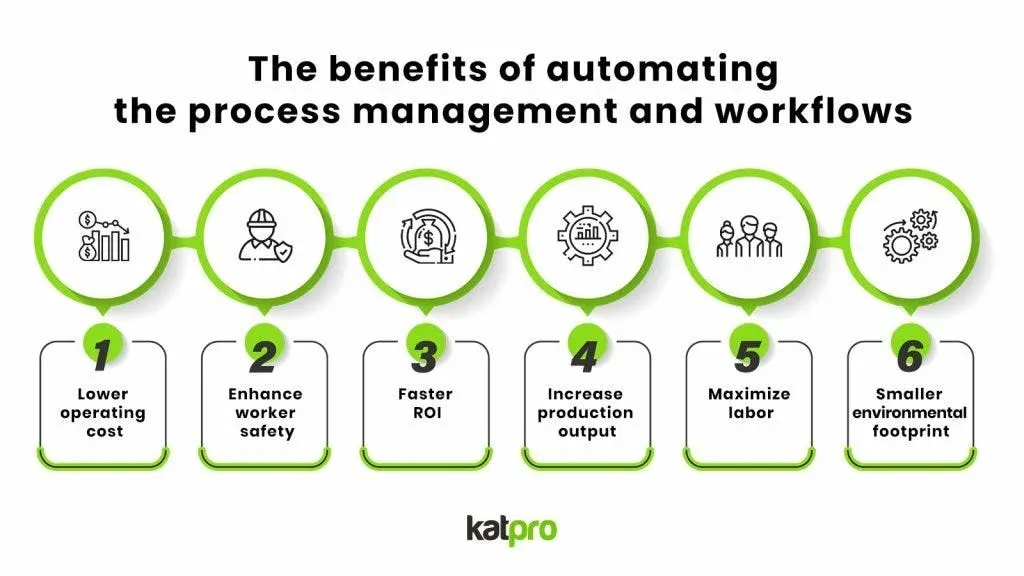
First, it boosts efficiency and output
- Companies produce more with the same resources by streamlining the production workflow and reducing downtime.
- Strong MPM ensures every operation runs smoothly, cutting delays and speeding up time-to-market.
Second, quality improves
- When work instructions and checks are managed centrally, there is less chance of error.
- Finished products consistently meet standards, so there is less scrap and rework. MPM also enhances visibility and traceability.
All product data – from the engineering BOM to the shop-floor steps – is tracked in one system
- Managers can always see which parts and processes went into a product.
- If a defect arises, they can trace it back to the source.
Other key benefits include cost reduction and agility
- Efficient MPM reduces waste of materials and time.
- By analyzing process data, companies can cut inventory needs and minimize overtime.
MPM also supports compliance: regulators often require proof of process control, and MPM gives companies a digital audit trail.
Finally, a managed process makes innovation easier: changes in design are quickly reflected on the production line, so new products or variants can be introduced faster.
- Increased Efficiency & Throughput: Optimized scheduling and execution boost output with existing resources.
- Improved Quality & Consistency: Centralized instructions and checks reduce errors and defects.
- Enhanced Visibility & Traceability: A single data source allows tracking every part and process step.
- Cost Savings & Lean Operations: Less scrap, better inventory control, reduced overtime, and lower costs.
- Faster Innovation & Agility: Seamless design-to-production flow means speedier time-to-market and quicker response to changes.
Real-World Impact: One factory implemented a custom manufacturing process management solution and achieved striking results: equipment changeovers became 10% faster, and administrative planning tasks were cut by 80%. These gains translated directly into speedier delivery and lower costs, illustrating the power of MPM.
Challenges in Manufacturing Process Management
Despite its rewards, adopting manufacturing process management has challenges. Common issues include the following.
- Integration Complexity: MPM must tie together systems like CAD/PLM, ERP, MES, and shop-floor automation. Connecting all these without data silos can be hard. Legacy equipment and disparate software may not easily communicate, so custom interfaces are often needed.
- High Cost & Effort: Implementing MPM often requires significant software investment and project time. There may be high upfront costs for configuration or custom development. Smaller businesses may worry about ROI and resource commitment. To succeed, organizations must map their processes carefully and set realistic goals.
- Change Management & Training: Introducing MPM means changing how engineers, planners, and factory teams work. There can be resistance if people are used to old habits. Adequate training and clear communication are crucial for smooth adoption.
- Data Quality & Governance: Inconsistent or incorrect data can undermine MPM. Companies need good data governance so that BOMs, designs, and production records are accurate.
- Security & Compliance: Cybersecurity becomes essential with more devices and data online. Companies must secure connections between IoT devices and MPM software. MPM also requires attention to industry compliance (e.g., in healthcare or aerospace) because all processes are documented.
- Keeping Up with Technology: As smart manufacturing evolves (AI, IoT, 5G), MPM systems must adapt. Companies need a clear roadmap for updates. Choosing a partner with manufacturing expertise is key, as one expert notes, look for firms that understand production operations and communicate clearly.
Despite these challenges, many businesses find that the benefits of MPM make it worth the effort.
Real-Life Example: MPM in Action
Manufacturing process management plays a crucial role in driving real-world improvements across industries.
Optimizing workflows, reducing waste, improving product quality, and streamlining operations help businesses enhance efficiency and stay competitive.
Industries from automotive to pharmaceuticals rely on effective process management to ensure consistent, scalable, and cost-effective production.
Case Study 1: Mid-Sized Manufacturing Plant, Bangladesh
Problem: The plant faced long equipment changeover times, limiting peak production capacity and operational efficiency.
Solution: They applied Lean Manufacturing Process Management (MPM) principles, specifically SMED (Single-Minute Exchange of Die), to streamline changeover processes and reduce downtime.
Results: Equipment changeover times fell by 18–33%, boosting production capacity by 10% during peak demand periods. The improvements optimized planning, resource allocation, and operational scheduling. (Source: IEOM Society)
Case Study 2: Automotive Parts Manufacturer
Problem: The company struggled with frequent parts-changeover delays, increased scrap rates, and long production cycles.
Solution: By implementing SMED-based MPM methods, they re-engineered setup processes to minimize downtime and operational waste.
Results: Setup times were reduced by 50%, significantly cutting scrap, reducing cycle times, and improving inventory control while increasing daily output.
Case Study 3: Electronics Manufacturing Company
Problem: Manual BOM updates and static scheduling led to errors, scrap, and inefficient production cycles.
Solution: The company adopted MRP-integrated Manufacturing Process Management software with automated BOM and schedule updates linked to CAD revisions.
Results: CAD updates synced instantly to shop-floor schedules, reducing scrap and shortening production cycles. Dynamic, real-time scheduling enhanced throughput and minimized costly delays.
The key? Tailor the solution to each plant’s unique flow—whether you're a small shop or an enterprise, MPM offers robust, scalable gains.
How to Get Started with Manufacturing Process Management
Getting started with manufacturing process management is a step-by-step journey.
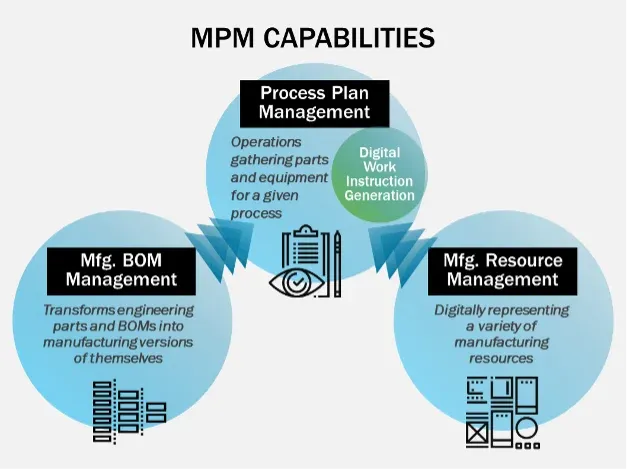
- Map Your Current Processes. Document how you build products now, from design through assembly to shipping. Identify bottlenecks, delays, and data gaps.
- Set Clear Goals. Decide what you want MPM to achieve: faster production, less scrap, better quality, etc. Align these goals with your business strategy.
- Evaluate Tools and Partners. Look at manufacturing process management (MPM) software and implementation partners with manufacturing expertise.
- Plan Integration. Ensure your MPM tool will connect to CAD/PLM, ERP, MES, and shop-floor devices. Data should flow automatically between systems to avoid manual work.
- Pilot and Train. Start small. Implement the MPM system on one production line or product. Train your engineers and operators on new workflows. Use feedback to refine processes.
- Scale and Improve. Once the pilot runs smoothly, expand to other lines or sites. Continuously monitor key metrics and use MPM data to find further improvements. Treat MPM as an ongoing program of continuous improvement.
By following these steps and working with experienced professionals, companies can successfully introduce MPM. The right partner can help translate your unique workflow into a digital system.
Future of Manufacturing Process Management
The future of manufacturing process management is tied to Industry 4.0 and beyond. We can expect even tighter integration with smart factories.
For example, more sensors and AI will feed live data into MPM systems to enable self-optimizing production.
According to Statista, 86.4% of businesses plan to adopt digital platforms and apps between 2023 and 2027—a share that leads other digital technologies and underscores the shift toward comprehensive digital transformation in manufacturing and beyond.
Moreover, the industrial automation market is booming
- The global industrial automation market was valued at approximately USD 175 billion in 2020.
- It is projected to grow to around USD 265 billion by 2025, reflecting a compound annual growth rate approaching 9%.
This growth means the following
- Factories will have more robots and automated machines
- All systems will generate data for the MPM systems
Future MPM tools will likely include the following
- AI-driven insights and virtual simulations (digital twins) of production lines
- Technologies like augmented reality and 5G networks
- Smart glasses for technicians to view assembly instructions
- Real-time, remote schedule adjustments by managers across multiple sites
In summary, manufacturing process management will continue to grow more intelligent and connected. Investing in MPM practices now sets the foundation for thriving in an automated, data-driven future.
Final Thoughts on Manufacturing Process Management
Manufacturing process management is essential for any company that is serious about efficient production.
By organizing how products are built – from design to assembly – an MPM system makes operations more transparent, flexible, and high-quality.
It helps engineering and factory teams collaborate, centralizes data, and drives continuous improvStrong, strong MPM means less wasted time and m for startups and enterprises, faster product launches, and greater competitiveness in healthcare, e-commerce, and on-demand services.
If you need a custom solution, consider AppsRhino. They build custom manufacturing production software that fits your process, not the other way around. AppsRhino’s team has deep manufacturing expertise and knows how to integrate scheduling, real-time inventory tracking, and shop-floor feedback into one system.
By partnering with AppsRhino, your business can implement a tailored MPM solution that streamlines production from design to delivery.
Frequently Asked Questions (FAQs)
What is manufacturing process management (MPM)?
Manufacturing process management defines, controls, and optimizes all steps needed to produce a product.
It encompasses planning, documentation, and execution across the production workflow.
How is MPM different from an MES or ERP?
An MES (manufacturing execution system) operates on the factory floor, managing work orders and tracking machines.
ERP (enterprise resource planning) handles business functions like finance and inventory.
Why does my business need manufacturing process management?
Even small manufacturers can benefit from MPM. It reduces errors by centralizing process information and improving scheduling.
Over time, it leads to cost savings (less scrap, better resource use) and higher product quality.
What tools are used in the manufacturing process management?
MPM involves various software and systems. PLM platforms (like Windchill MPMLink) often include MPM modules.
ERP and MES systems integrate with MPM for data flow. In addition, manufacturers use automation equipment and IoT devices that feed data into the MPM.
How do I implement manufacturing process management?
Start by mapping your current production process and identifying goals (e.g., reduce lead time, improve quality).
Then choose an approach: you could customize PLM/MES/ERP tools or develop new MPM software. Choose a partner with manufacturing expertise.
Begin with a pilot on one line, train your team, and use feedback to refine the system. Gradually roll it out to more processes as you see success.
How does manufacturing process management relate to smart manufacturing?
MPM is a core part of smart manufacturing. It provides the digital backbone for an automated factory.
With IoT sensors and real-time analytics, MPM systems enable brilliant production – where machines and teams respond instantly to changes.
Table of Contents
- Basics of Manufacturing Process Management
- Core Elements of Manufacturing Process Management
- Stages of Manufacturing Process Management
- Tools and Technologies Used in Manufacturing Process Management
- Traditional vs Smart Manufacturing: How MPM Changes the Game
- Benefits of Manufacturing Process Management
- Challenges in Manufacturing Process Management
- Real-Life Example: MPM in Action
- How to Get Started with Manufacturing Process Management
- Future of Manufacturing Process Management
- Final Thoughts on Manufacturing Process Management
- Frequently Asked Questions (FAQs)


